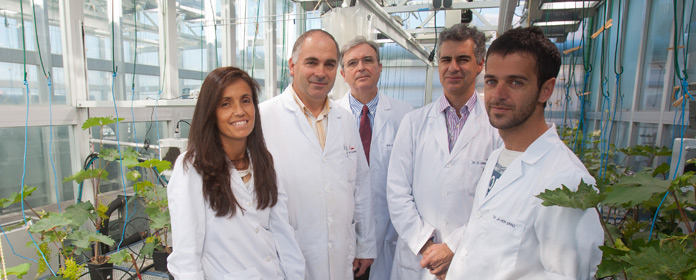Breakthrough in the knowledge of a plant hormone that protects plants against pathogens and stress.
Researchers from department of Environmental Biology of the University of Navarra collaborate with CSIC in a study published in Nature Chemical Biology.

PHOTO: Manuel Castells
Ángel Mª Zamarreño and Jose Mª Garcia-Mina, researchers of the group Bach of the department of Environmental Biology of the School of Sciences of the University of Navarra, have collaborated in a research led by the CSIC (committee Superior Council of Scientific Research) thanks to which a new pathway of biosynthesis of jasmonic acid in plants has been revealed (the jasmonate hormone is considered core topic in the defense of plants against pathogens and stress situations).
This work -recently published in Nature Chemical Biologywhich will appear on the February cover of the journal - has been led by Roberto Solano and his team at the National Center of Biotechnology of CSIC. It has also benefited from the collaboration of several European groups, including partnership . Among them, the group Bach of the University of Navarra, whose researchers have participated in the identification and determination of the main metabolites involved in the new synthesis pathway of jasmonic acid, as Professor García-Mina explains.
The beginning of a finding that can favor more efficient cultivation.In the opinion of Andrea Chini, CNB-CSIC scientist and first author of the study, "for decades we have taken for granted that there was a single pathway for generating the hormone jasmonate in plants. It is a deeply studied and perfectly described pathway. Our work reveals that plants secretly kept an alternative pathway that allows them to have the hormone when they need it".
According to the authors, the peculiarities of this new pathway are not yet known. "It may be that it is activated only when the classical pathway fails, or only in response to specific stimuli. What seems clearer is that it has been of significant importance throughout evolution and probably precedes the better-known pathway."
"Likewise", adds Ángel Mª Zamarreño, researcher of the University of Navarra, "this research may contribute to the future development of more effective strategies for the protection of crops against different types of stress".




